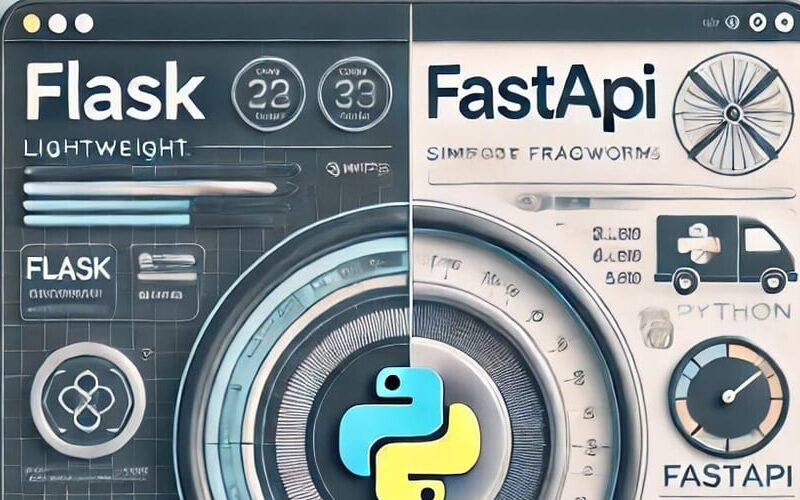When it comes to Python web development, two frameworks stand out: Flask and FastAPI. Both are excellent tools, but they cater to different needs. Whether you’re building a simple web app or a high-performance API, understanding their differences can help you make the right choice. Let’s break down the strengths and weaknesses of Flask and FastAPI so you can decide which one fits your project best.
A Quick Overview of Flask
Flask is the veteran framework, first introduced in 2010. It’s a microframework, meaning it provides the essentials and lets you add features as needed. Flask is known for its simplicity, making it a favorite for beginners and small-scale projects.
Why Developers Love Flask:
- Simplicity First: A clean and minimalistic approach.
- Flexible Extensions: Customize functionality with tools like Flask-SQLAlchemy and Flask-RESTful.
- Beginner-Friendly: Easy to set up and learn, even for those new to Python.
- Large Community: Tons of tutorials, plugins, and support available.
Flask is ideal for applications where you value control and customization over pre-built features.
What is FastAPI All About?
FastAPI, released in 2018, is a modern framework designed specifically for building high-performance APIs. It embraces asynchronous programming, making it perfect for applications that need to handle thousands of requests per second.
What Sets FastAPI Apart:
- Automatic API Docs: Built-in Swagger UI and OpenAPI documentation.
-
Asynchronous by Default: Handle multiple requests efficiently with
asyncandawait. - Data Validation Made Easy: Pydantic ensures data integrity with minimal effort.
- Blazing Fast: Comparable in performance to frameworks like Node.js and Go.
If you’re developing an API for a machine learning model or real-time system, FastAPI offers the speed and efficiency you need.
Flask vs. FastAPI: Feature Comparison
| Feature | Flask | FastAPI |
|---|---|---|
| Ease of Use | Beginner-friendly | Advanced but well-documented |
| Performance | Moderate | High (async support) |
| Built-in Validation | None (requires manual coding) | Native with Pydantic |
| Async Programming | Limited | Fully supported |
| API Documentation | Requires third-party tools | Built-in with Swagger |
| Community | Established, mature | Growing rapidly |
When Should You Use Flask?
Flask is a great choice for:
- Simple Web Applications: Small to medium projects like blogs, dashboards, or content management systems.
- Learning and Prototyping: Its simplicity makes it perfect for beginners or quick MVPs.
- Customizable Features: If you want to build an application tailored to your specific needs without extra complexity.
Example:
A student portal for managing assignments and announcements could be built easily with Flask.
When Should You Use FastAPI?
FastAPI is the framework to choose for:
- High-Performance APIs: Applications that require fast and scalable solutions, like e-commerce platforms or fintech services.
- Data-Driven Applications: When your project involves extensive input validation, such as ML model APIs or IoT systems.
- Modern Development Practices: If you need async functionality and automatic documentation out of the box.
Example:
A stock trading API that handles real-time data and high traffic efficiently is a perfect fit for FastAPI.
Real-World Performance: Why Speed Matters
FastAPI’s performance is a game-changer. Its asynchronous design can handle three times more requests than Flask in some benchmarks. This makes it ideal for scenarios where speed and concurrency are critical.
Flask, on the other hand, is synchronous by default. While extensions like gevent or asyncio can add concurrency, they require additional effort to set up.
Conclusion: Which Framework is Right for You?
Choosing between Flask and FastAPI boils down to your project requirements:
- Go with Flask if you want simplicity and flexibility for smaller projects.
- Choose FastAPI if you need high performance, async support, and automatic features for modern, scalable applications.
Both frameworks are powerful tools for Python developers. Evaluate your project needs, and don’t hesitate to experiment with both to find your perfect fit!
Source link
lol

